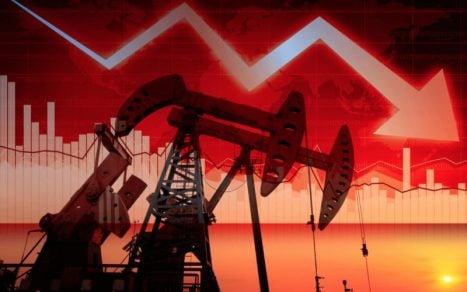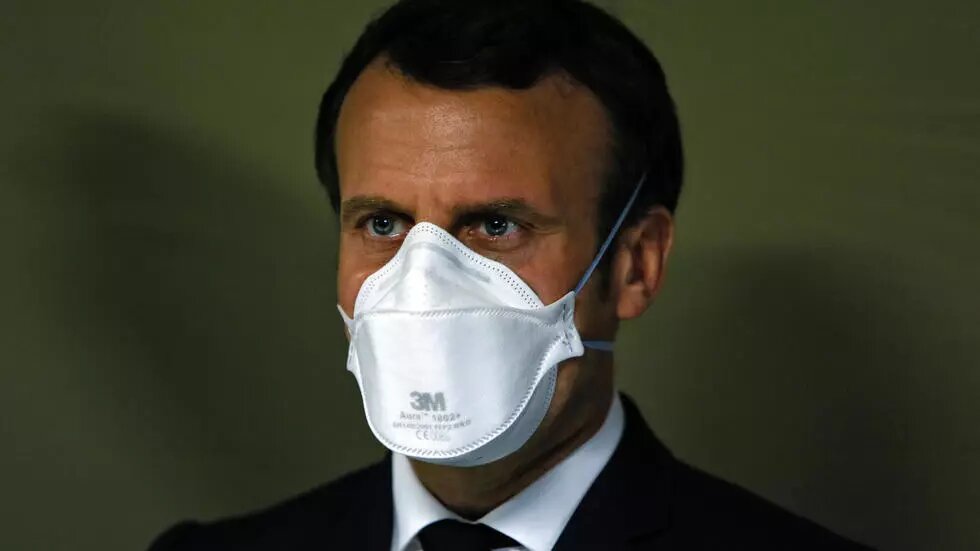Texas Intermediate Oil (WTI) saw a historic slump of 305% on Monday, and for the first time since statistics have been recorded, it fell into negative territory.
The value of the US barrel closed at -37.63 dollars, a fact that means that sellers do not charge for the sale of a barrel, but rather, on the contrary, pay to get rid of it.
WTI futures contracts for May delivery, which expire on Tuesday, traded below $ 0 an hour before the close of business on the New York Stock Exchange, on a record day for the benchmark crude in the United States.
Desperation overwhelms those who are contract holders for May, because they must find buyers for oil as soon as possible.

“The future of WTI of May experience massive sales as they expire tomorrow. All investors who do not want physical delivery need to sell the May contract before it expires. But, there are no physical buyers for this contract since the storage capacities in the US have reached their maximum», explained Michel Salden, analyst at Vontobel AM.
Holders seek to prevent the WTI price from turning negative again, as it happened this Monday.
This scenario occurs when the oil tanks are full, and the oil producers are forced to pay the buyers to collect it, because they have to avoid the closure of the fields.
“The barrel of West Texas fell to 305% of its value. That is, at the beginning of the session investors paid around $ 17 per barrel and late at night they received $ 37. Something unthinkable months ago”, reported El País.
The barrel of Brent oil from the North Sea, a benchmark in Europe, also suffered after falling 8% ($ 2.5) to be exchanged for $ 25.8: while the price of the Organization of Petroleum Exporting Countries (OPEC) remained at around $ 13.
However, the fall is more dramatic in the United States because the fracking industry and its shale oil extraction projects rule there, which have contributed to making the North American nation the first producer of crude oil in the world, and that’s why now its market is the most affected.

The worst year for oil
Last week, the International Energy Agency (IEA) called 2020 «the worst year in history for oil», and warned that the market was approaching a «black April».
In addition, it warned that excess supply would test the world’s capacity to store crude oil, with the risk that saturation in some fields would force production to stop.
In turn, OPEC forecasted that demand for crude oil would drop by around 20 million barrels per day in April. While in the rest of the year it would decrease by 6.91 million barrels per day.

Is the coronavirus to be blamed?
Both the IEA and various analysts predicted the fall in oil, due to the drop in energy demand caused by the quarantine measures taken by many countries to stop the spread of the COVID-19 coronavirus, which have paralyzed a large part of economic activities on the planet.
«The confinement measures by the coronavirus are causing a historical collapse in the demand for oil in the world», said the IEA in its most recent report.
The truth is that since almost half of the world’s population is in quarantine – with different nuances depending on the country – there are no buyers, and oil prices have not stopped falling since January.
With the economic activity paralyzed and prices on the floor, the world has more oil than it can use and the deposits and refineries are filling up quickly, so there is nowhere to store production.
«The reserve tanks have run out of space to store more crude oil after the fall in demand due to the pandemic, and ships have even been used», said El País.
In its monthly report, the IEA warned that «never before has the oil industry been so close to seeing its logistics capacity challenged».
While the economic and geopolitical consultancy Eurasia Group indicated that «ports and refineries are rejecting access to ships and oil tanks, which will put more pressure» on the already complex situation.
According to analysts, a recovery in demand will be necessary to turn the market upside up again, and that will depend on how the health crisis caused by the pandemic develops.

Price war
Another factor that has influenced is the lack of agreement between the main crude oil producers. In early March, OPEC member countries and other external producers like Russia, known as OPEC +, failed in trying to set a joint cut to stabilize the market.
This result caused the price of a barrel of oil to drop below $ 50 for the first time since 2017.
In addition, Saudi Arabia and Russia launched a price war that led crude oil to fall even further and to its lowest level since 2002. In the specific case of WTI, this marker sank below $ 20 per barrel.
Given this scenario, OPEC and its allies, including Russia, finally agreed on April 9 to reduce production by 10 million barrels per day, to boost markets affected by the coronavirus.
The agreement was the largest production cut ever agreed by the oil world powers, but for some analysts and investors it is not enough to alleviate the collapse of demand in the middle of the pandemic.
«It took time for the market to realize that the OPEC + agreement, at least as it stands now, will not be enough to balance the oil market», said Stephen Innes, analyst at Axicorp, quoted by Clarín.
The US is paying for its ambition

According to several analysts, the US is paying the consequences of running the risk of indiscriminately increasing its production, especially through fracking projects that allow large quantities of crude to be extracted from shale fields.
Despite the fact that the North American nation is the largest consumer of energy on the planet, its crude oil reserves have increased enormously in recent weeks.
Last week, the US Energy Information Administration reported that oil inventories rose 19.25 million barrels.
Sukrit Vijayakar, an analyst at Trifecta Consultants, explained that the US refineries are unable to transform oil quickly enough, which explains why there are fewer buyers and that reserves continue to rise.
For the fracking industry, this low price scenario is deadly, due to the cost of its operations.
Diego Morín, an analyst at the Spanish financial firm IG, warned that the market situation may bankrupt some North American oil companies engaged in fracking.
«Having a barrel below the $ 50 barrier is detrimental to the shale industry», he told El País, noting that in view of the trend, the market will take a long time to pay that amount again. .
For his part, the Venezuelan economist Luis Salas Rodríguez announced – on his Telegram channel – that the banks are preparing themselves to seize the assets of the shale companies to which they have lent money to and that are now on the verge of insolvency as a result of the crisis.

What will happen to oil?
The future of the oil market, and especially the United States market, is uncertain. More than half of the world remains in quarantine due to COVID-19, and the demand generated by the commercial and industrial sector will not reactivate in the short term.
Will the price of markers like the WTI continue to plummet? That is the question that several analysts try to answer, although without offering a definitive answer.
Luis Salas Rodríguez assured that it is necessary to observe the development of the stock exchanges to identify the behavior of the market.
However, he argued that a rise in the price of WTI contracts can be generated for deliveries in June, which could reach $ 20 per barrel.
«We have to see how the stock markets will react after today’s blows tomorrow, although a rebound in prices for June contracts is not ruled out», he said.
Other analysts say that there will be a desperation in the market to find buyers for WTI contracts with delivery in May and ending on Tuesday.
The biggest problem is that reserves have increased enormously in the United States in recent weeks, which has led to a drop in prices.
«I think we are going to test the lowest levels since 1998 at around $ 11 very soon». said Jeffrey Halley, market analyst for US equity firm Oanda. It will dawn and we will see!




